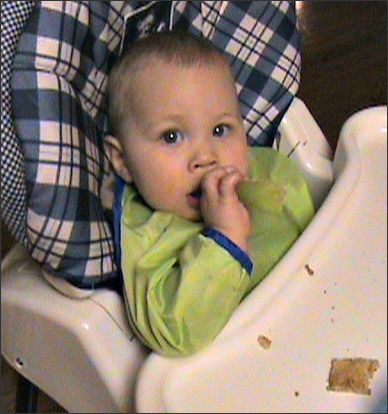Heavy Issue in Childhood and Puberty

Many studies indicate that obesity and overweight cases among children and adolescents have dramatically increased over the last few decades. Several causes are to blame, such as a diminution of physical activity, augmentation of the daily food consumption often twined with a poor selection and finally, parents’ influence on their children regarding eating and exercising habits. Many experts from varying fields worry about the phenomena and suggest possible cures. The most effective and proven way to lose weight is to maintain a well-balanced diet combined with a well-rounded exercise program. Specialists also believe that a good family model is imperative to educating children and teenagers about healthy eating and exercising habits.
In his report entitled The Juvenile Obesity Epidemic: Strike Back with Physical Activity (2003), McMaster University professor Oded Bar-Or, M.D. comments that many studies conclude a sedentary lifestyle is contributing to the current obesity problem in children and adolescents. He also claims there is a relationship between time spent on television, computers and video games and the risk of becoming overweight and obese because of the reduction of the daily energy expenditure.
In a survey presented at the 51st American College of Sport Medicine (ACSM) Annual meeting in Indianapolis mentioned that parents represent the greatest influence on their children’s eating and exercising habits. Betsy A. Keller, Ph.D., emphasized that parents select food at the store and permit what activities children do or do not do. Children and adolescents are exposed to their parents’ patterns and will likely imitate them. In fact, it was calculated in the ACSM survey that 79% of overweight parents have overweight children compared to 30% of normal weight parents who have overweight children.
In an article titled Addressing an Epidemic: Treatment Strategies for Youth Obesity in the ACSM Fit Society journal, Katherine A. Beals, Ph.D., R.D., confirms that 40% of obese children and 70% of obese adolescents will remain obese into adulthood. She also stresses that genetic factors of overweightness or obesity only represents a minimal percentage and that a sedentary lifestyle and quantity/ quality of food consumption are to blame. She agrees that the best ways to treat overweight and obesity problems is to associate reduction of daily energy intake and increase of energy output. In other terms, it is first important to limit the amount of food eaten and make smart choices in food selection. To do so, one must follow the general guidelines laid out by nutritionists. Secondly, it is helpful to encourage weight loss by being active to burn more energy.
At the 52nd ACSM Annual Meeting in Nashville, it was suggested that resistance training is safe and beneficial for overweight and obese children and teenagers as it improves strength and body composition. It is a well known fact among specialists that the greater is the lean body mass of a person, the more energy he/ she requires to complete an activity. As resistance training tends to grow lean body mass, it plays a role in weight control. Oded Bar-Or, M.D., states in his above mentioned report that children and teenagers must take part in aerobic-type activities to emphasize calorie burning to help correct their overweight and obesity condition.
Paul E. Luebbers wrote in his article The Right Time for Kids to Exercise (2003) that it is imperative that people who tutor children encourage an active lifestyle. The goal is to initiate fun physical activities in children at the earliest possible age to ensure they enjoy physical activities and choose to remain active all life long. To keep the interest of children and promote their optimal development, it is essential to offer activities that correspond to their skill levels and listen to their preferences and expectations. In the same article it is proposed that parents become role models for their children by promoting healthy lifestyles. To the same effect, Betsy A. Keller, Ph.D., commented at the 51st ACSM Annual meeting that “Healthy eating and exercise habits have to become habit, like brushing our teeth: Once we learn, we do it all our lives. The issue here is that parents are failing to recognize the fact they model eating and exercise behaviours to their children”.
In conclusion, there is a growing problem concerning the health of children and adolescents and some efforts are indispensable to reverse the situation. Obesity and overweightness are directly related to higher risks of developing coronary diseases, diabetes, some types of cancer, high blood pressure and many more pathologies. It is necessary to consider the question seriously and apply the guidelines outlined by many health specialists. First, incite children and teenagers to be a lot more active physically. Second, encourage them to eat in strict moderation related to their physiological needs. Third, educate them on how to make healthy food choices. Lastly, we must spur parents to become role models in eating and exercising habits for their children.
Article written by: Majorie Lauzon
Copyright 2005
Published in the Kinnected: The Journal of BC Association of Kinesiologists
Issue March 2007
Online Bibliography:
1. American College of Sports Medicine
Select for Popular Links Become ACSM Certified About Our Meetings Fit Society Page View SMB Online General Health & Fitness Information ACSM Brochures & Publications Apply / Renew National Membership ACSM Membership Directory Change of
... Further, most parents recognize it if their child is overweight, but those who misclassify their ov ... or obese kids as normal weight also report having difficulty regulating eating behavior and physica ...
http://www.acsm.org/ publications/ newsreleases2004/ parentsobesitykids060204.htm - 26k - 18/Apr/2005 cache
2. ACSM Fitsoc Page Spring 03 - Page 1
1 Spring 2003A Quarterly Publication of the American College of Sports Medicine • www.acsm.org Activity is good. This seems to be something that kids intuitively know. Children tend to be naturally active, as many exhausted parents can
... her skill level. The Right Time for Kids to Exercise By Paul E. Luebbers YOUTH SPORTS & HEALTH Insi ...
http://www.acsm.org/ health+fitness/ pdf/ fitsociety/ fitsc203.pdf - 160k - 09/Jun/2003
3. American College of Sports Medicine
Select for Popular Links Become ACSM Certified About Our Meetings Fit Society Page View SMB Online General Health & Fitness Information ACSM Brochures & Publications Apply / Renew National Membership ACSM Membership Directory Change of
... immediate release OBESE CHILDREN BENEFIT FROM RESISTANCE TRAINING Strength, body composition signif ...
http://www.acsm.org/ publications/ newsreleases2005/ AM_ObeseChild.htm - 25k - 02/Jun/2005 cache
4. Gatorade Sports Science Institute: GSSI Update - May 2003 - [ Traduire cette page ]
(Type SSE #89 in SEARH space)
Sports Science Exchange 89 -The Juvenile Obesity Epidemic: Strike Back with
Physical Activity - The last three decades have seen a dramatic surge in ...
www.gssiweb.com/newsletter/aug2003update.cfm - 18k - En cache - Pages similaires
http://www.gssiweb.com/reflib/refs/608/SSE_89_text.cfm?pid=96&CFID=2429760&CFTOKEN=65122198
Posted: June 13, 2012 In: Nutrition

